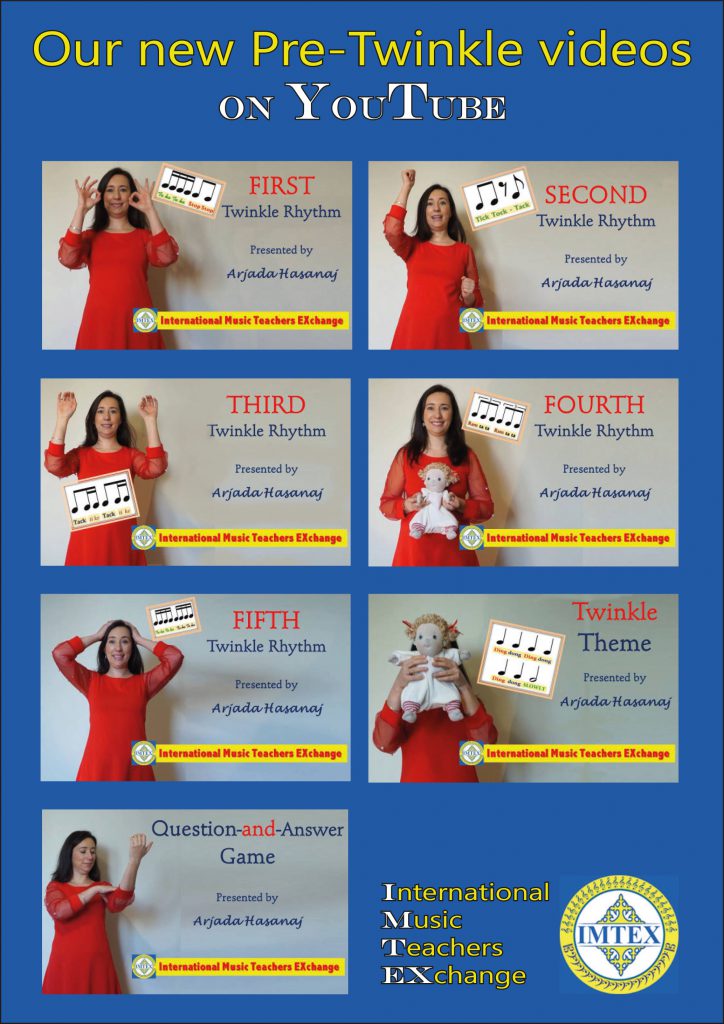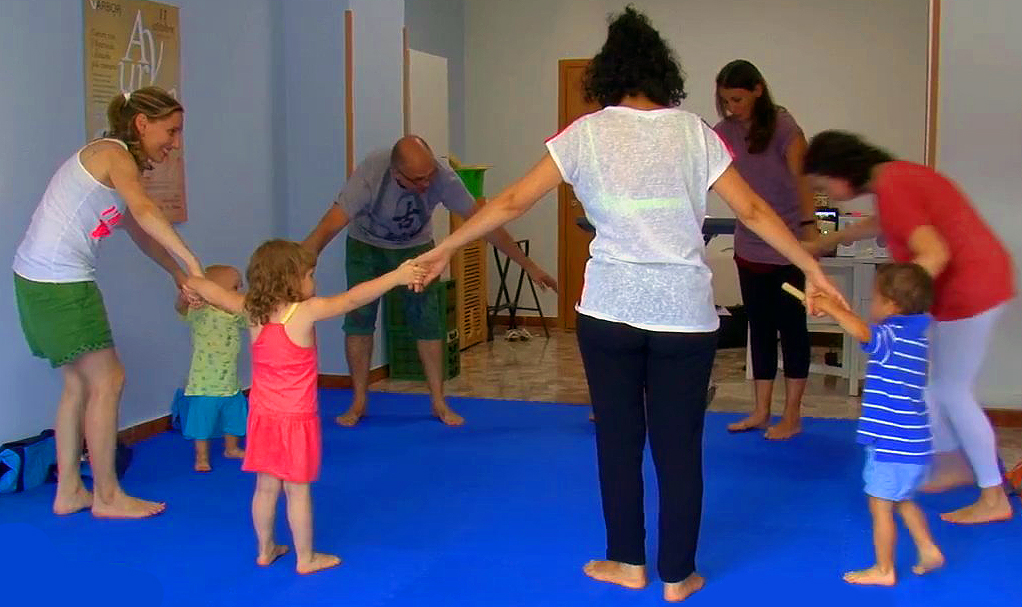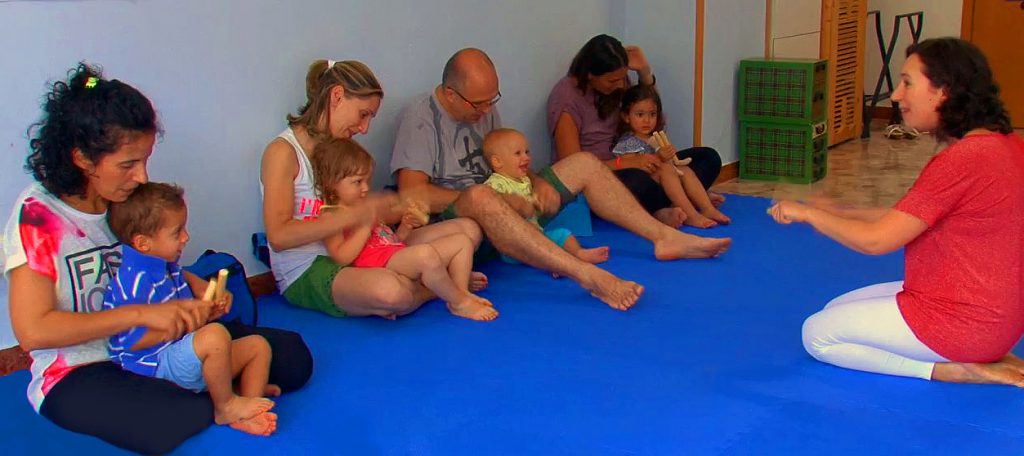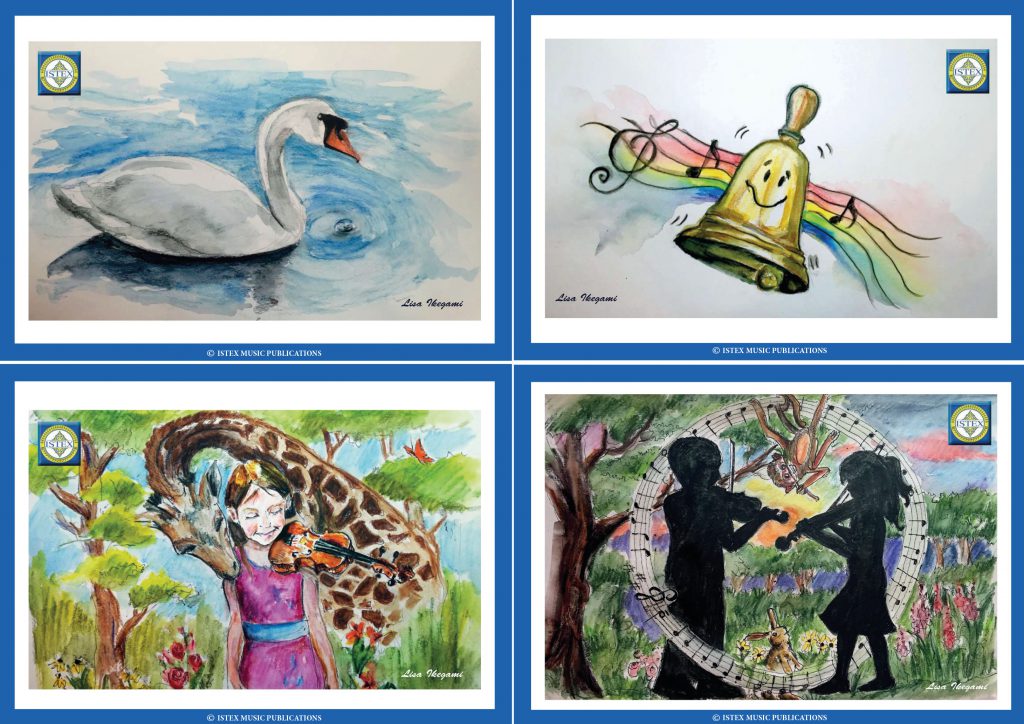This website is dedicated to all young violin students, their parents, and their teachers.
From the very beginning, we want to present possibilities for a solid start and awaken joy in music-making. We focus on teaching correct child-appropriate practice habits which range from listening, singing, and dancing to playing music.
These ideas presented in the following four sections should stimulate daily practice to make it more effective:
I. Music & Movement: Pre-Twinkle Exercises WITHOUT Instrument
II. Pre-Twinkle Exercises WITH Instrument
III. Music for Mixed-Level String Ensemble
IV. Articles and eBooks for Teachers and Parents
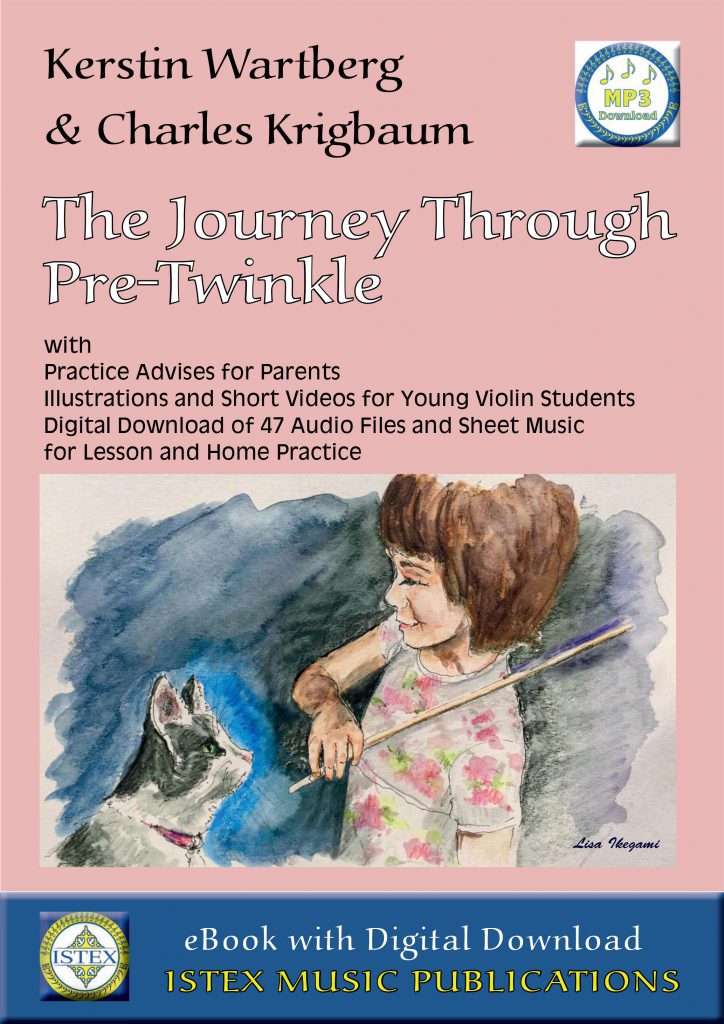
I. Music & Movement: Pre-Twinkle Exercises WITHOUT Instrument
Benefits of Music & Movement
Young children enjoy moving around when they hear music. They feel energy, life, joy, and playfulness. Teachers should encourage this desire and include these activities during their teaching. Research has shown that the connection between body movement, rhythm and awareness is beneficial to the development during the whole childhood, which includes not only thinking and feeling, but also motoric abilities.
Most activities in this initial phase should be associated with music.
It is a fact that children learn and internalize best in a playful and happy atmosphere.
Concrete aims
- Getting to know and becoming familiar with the violin repertoire of the first STEP by STEP volume.
- Through singing, clapping and movement games, the basics in the areas of rhythm and intonation are conveyed.
- The intensive training of the senses (listening, seeing, touching and feeling).
- The development of physical endurance and dexterity in the gross and fine motor skills.
- Growing into the task of daily practice at home. This is a new area of life to be discovered by both, the child and the parents.
- Continuous work on personal and social skills like concentration, memory, endurance, self-esteem, willingness to perform, social behavior in the group.
Some teachers start with the above before instrument-specific lessons begin.
Others start these parallel with the first exercises on the violin. In this case it would be best if the children had lessons twice a week:
A short private lesson and a group class.
Another interesting example …
II. Pre-Twinkle Exercises WITH Instrument
How do very young children learn the basic skills of violin playing? Please watch the video The Journey Through Pre-Twinkle.
Start Using the Foot Chart
1:51 Holding the Bow
4:11 Holding the Violin
5:17 The First Twinkle Rhythm
7:16 Two New Songs
9:59 Preparing the Left Hand Fingers
13:23 Preparation Technique and Rhythm with Three Fingers
The Journey Through Pre-Twinkle
By Kerstin Wartberg & Charles Krigbaum
eBook (27 pages)
43 audio files
videos
20 Lucky Dip Cards with paintings of LISA IKEGAMI
Rudolf Gaehler, violin * Gino Romero Ramirez, djembé * David Andruss, piano and piano arrangements for all recorded pieces
A practical suggestion by Mimi Zweig
Making a pinky house for the bow hand pinky finger
Pinky House
This is a little nest for the right hand pinky that helps the student maintain a curved fourth finger. It is created out of tape and positioned above the button on the frog.
The video was provided by courtesy of Mimi Zweig, Professor of Music (Violin, Viola); Director, Pre-College Strings Jacobs School of Music, Indiana University Bloomington, USA
Bow Hold Games
These games teach the student to maintain a proper bow hold in a variety of different positions.
- Pinocchio — place the frog on the nose so that bow is horizontal
- Unicorn — place the frog on top of the head
- Space Shuttle — 3, 2, 1 – blast off! — go from the floor to as high as the student can reach
- Windshield Wipers — rotate the forearm in a windshield wiper motion (This is good for learning how to balance the pinky.)
- 3, 2, 1 – Go! — Have the student pick up the bow and place on the left shoulder with the correct bow hold as quickly as possible, and then tap the fingers.
- Stirring the soup — invite children to give ingredients
- Secret bow holds — finding bow holds behind back
- Speedy bow holds — finding bow holds as fast as possible
- Drawing round faces — preparation for bow circles in Song of the Wind
FINGER before BOW –
The Preparation Technique
Two beats of preparation are included before every rhythm.
The FIRST beat is for the left hand (Ready).
The SECOND beat is for the preparation of the right hand (Play).
The Ready-Play Rests are an important part of Preparation Technique.
We want to train quick reflexes from the very beginning. The rests help us to control the movements and coordination of the child’s left and right hands.

